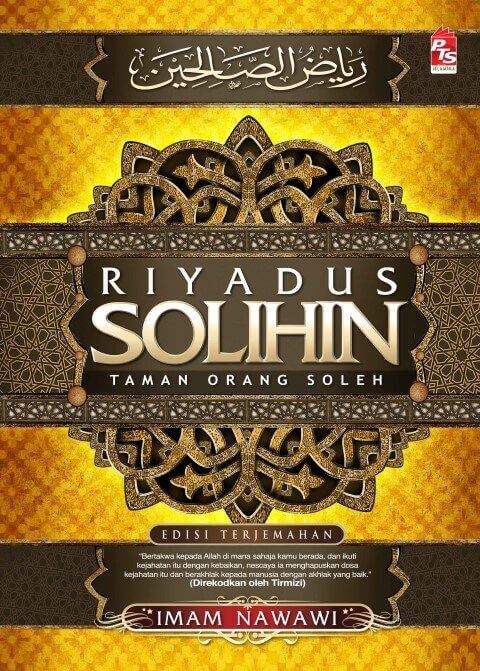Ka’bah has been the holiest site in Saudi Arabia and is central to the lives of Muslims around the world. Since the time of the Prophet Ibrahim its role has been a sanctuary. Retracing the early history of Islam, it is recorded that Ibrahim had left his wife Hajar and their infant son Ismail in the barren valley of Mecca, described in the Qur’an as “the valley without cultivation.” (Surah Ibrahim: 37)
Reflecting the sanctity of the Ka’bah, it has long been a tradition to cover the structure appropriately. Kiswah is a cloth that covers the Ka’bah in Mecca. Kiswah was first installed since pre-Islamic era. There is disagreement about the earliest makers of Kiswah between Prophet Ismail and Adnan bin Ad, the ancestor of Prophet Muhammad. Kiswah of the first woven fabric was made by the King of Yemen, called Tubba’ (As’ad Al-Himyari) 2,500 years ago after having tried and failed to destroy that ancient structure for three times.
During the time of Prophet Muhammad (peace and blessing be upon him), Kiswah was left without a replacement (because the Quraish did not let them) until the city of Mecca, dominated by Muslims (630AD/7AH). Once a time, Kiswah was burned inadvertently by a woman who is lighting incense in the Ka'bah. Since then, Prophet Muhammad (peace and blessing be upon him) covers the Kiswah with a brocade, a Yemeni cloth and a thin white Egyptian cloth known as Qibati.
During the reign of Caliph Mu'awiyyah bin Abi Sufyan (Umayyad Dinasty 662-750AD/41-132AH), Kiswah was suspended on the Ka’bah twice a year with brocade on the day of 'Ashura' and with Qibati at the end of Ramadhan. Then, Yazid bin Mu'awiyyah, Abdullah Bin Al-Zubair and Abdul Malik bin Marwan, cover the Ka'bah with brocade during the 8th of Zulhijjah (the day of At-Tarwiyah) and the other with Qibati for celebrating Eid Al-Fitr.
During the reign of Caliph Abbasiyah, the Al-Nasir began a tradition of suspending only one Kiswah at a time not like before, where a new Kiswah was put on top the old Kiswah. Kiswah suspension in several layers was feared could damage the Ka’bah structure.
During the reign of Caliph Ma'mun, Kiswah was suspended three times a year with different color of red in Zulhijjah, white Qibati in the month of Rejab and white brocade on the 29th of Ramadan. It was further 600 years before black was to become a standard colour of Kiswah and last until today.
Initially, Kiswah was made in Egypt. Materials used to make Kiswah was brought in from several countries including Sudan, Iraq, India and Egypt. Transporting Kiswah to Mecca from Egypt was always a celebration. For centuries, a huge annual parade consisting of the Mahmal and military escorts carrying the Kiswah would precede the Hajj season.
The most significant change was when King Abdul Aziz Al-Saud established an institution in 1931 (located in Mecca's Umm Al-Joud suburb) that was responsible for producing the Kiswah in Saudi Arabia. Since 1977, every Kiswah was made in Mecca. Now Kiswah plant in Saudi Arabia is using modern computerized machines on drafting the Arabic script on the Kiswah cloth before it is embroidered with gold threads. The Kiswah cloth is traditionally woven, where embroidery work is still done by hand and it take a very long time to be completed. There are approximately 300 employees assigned to weave the silk. In a day a worker can only weave about 2 cm. To complete the Kiswah for the Ka’bah, a total of 670 kg of Italian pure silk is needed. While approximately 50 kg of gold is used for the embroidery on the Kiswah. The cost of completing a set of Kiswah can be reached to 20 million Saudi Riyal including wages of its employees.
Ka’bah is a cube-shaped building with a height of 15 m and each wall have a different widths that is the northern wall known as al-Rukn Shanmi of 10:02 m, western wall or al-Rukn Gharbi of 11:58 m, southern wall or al-Rukn al-Yamani of 10:13 m and the eastern wall or al-Rukn al-Aswad of 10:22 m. Within a year, they could only complete a piece of Kiswah cloth to cover the walls of the Ka’bah. Kiswah consists of 47 pieces of cloth attached together with a laser guided sewing machine (Largest in the world). In addition to Kiswah, the factory also makes nets for the tomb of the Prophet Muhammad (peace and blessing be upon him) in Masjidi Al-Nabawi.
Reflecting the sanctity of the Ka’bah, it has long been a tradition to cover the structure appropriately. Kiswah is a cloth that covers the Ka’bah in Mecca. Kiswah was first installed since pre-Islamic era. There is disagreement about the earliest makers of Kiswah between Prophet Ismail and Adnan bin Ad, the ancestor of Prophet Muhammad. Kiswah of the first woven fabric was made by the King of Yemen, called Tubba’ (As’ad Al-Himyari) 2,500 years ago after having tried and failed to destroy that ancient structure for three times.
During the time of Prophet Muhammad (peace and blessing be upon him), Kiswah was left without a replacement (because the Quraish did not let them) until the city of Mecca, dominated by Muslims (630AD/7AH). Once a time, Kiswah was burned inadvertently by a woman who is lighting incense in the Ka'bah. Since then, Prophet Muhammad (peace and blessing be upon him) covers the Kiswah with a brocade, a Yemeni cloth and a thin white Egyptian cloth known as Qibati.
During the reign of Caliph Mu'awiyyah bin Abi Sufyan (Umayyad Dinasty 662-750AD/41-132AH), Kiswah was suspended on the Ka’bah twice a year with brocade on the day of 'Ashura' and with Qibati at the end of Ramadhan. Then, Yazid bin Mu'awiyyah, Abdullah Bin Al-Zubair and Abdul Malik bin Marwan, cover the Ka'bah with brocade during the 8th of Zulhijjah (the day of At-Tarwiyah) and the other with Qibati for celebrating Eid Al-Fitr.
During the reign of Caliph Abbasiyah, the Al-Nasir began a tradition of suspending only one Kiswah at a time not like before, where a new Kiswah was put on top the old Kiswah. Kiswah suspension in several layers was feared could damage the Ka’bah structure.
During the reign of Caliph Ma'mun, Kiswah was suspended three times a year with different color of red in Zulhijjah, white Qibati in the month of Rejab and white brocade on the 29th of Ramadan. It was further 600 years before black was to become a standard colour of Kiswah and last until today.
Initially, Kiswah was made in Egypt. Materials used to make Kiswah was brought in from several countries including Sudan, Iraq, India and Egypt. Transporting Kiswah to Mecca from Egypt was always a celebration. For centuries, a huge annual parade consisting of the Mahmal and military escorts carrying the Kiswah would precede the Hajj season.
The most significant change was when King Abdul Aziz Al-Saud established an institution in 1931 (located in Mecca's Umm Al-Joud suburb) that was responsible for producing the Kiswah in Saudi Arabia. Since 1977, every Kiswah was made in Mecca. Now Kiswah plant in Saudi Arabia is using modern computerized machines on drafting the Arabic script on the Kiswah cloth before it is embroidered with gold threads. The Kiswah cloth is traditionally woven, where embroidery work is still done by hand and it take a very long time to be completed. There are approximately 300 employees assigned to weave the silk. In a day a worker can only weave about 2 cm. To complete the Kiswah for the Ka’bah, a total of 670 kg of Italian pure silk is needed. While approximately 50 kg of gold is used for the embroidery on the Kiswah. The cost of completing a set of Kiswah can be reached to 20 million Saudi Riyal including wages of its employees.
Ka’bah is a cube-shaped building with a height of 15 m and each wall have a different widths that is the northern wall known as al-Rukn Shanmi of 10:02 m, western wall or al-Rukn Gharbi of 11:58 m, southern wall or al-Rukn al-Yamani of 10:13 m and the eastern wall or al-Rukn al-Aswad of 10:22 m. Within a year, they could only complete a piece of Kiswah cloth to cover the walls of the Ka’bah. Kiswah consists of 47 pieces of cloth attached together with a laser guided sewing machine (Largest in the world). In addition to Kiswah, the factory also makes nets for the tomb of the Prophet Muhammad (peace and blessing be upon him) in Masjidi Al-Nabawi.

















No comments :
Post a Comment